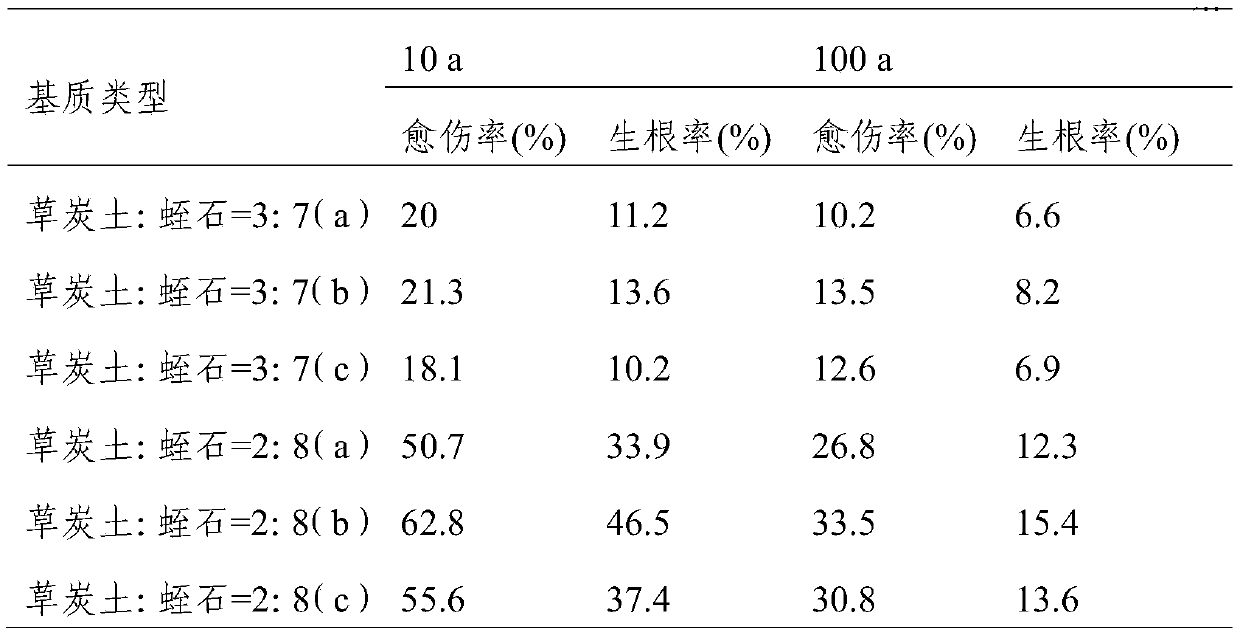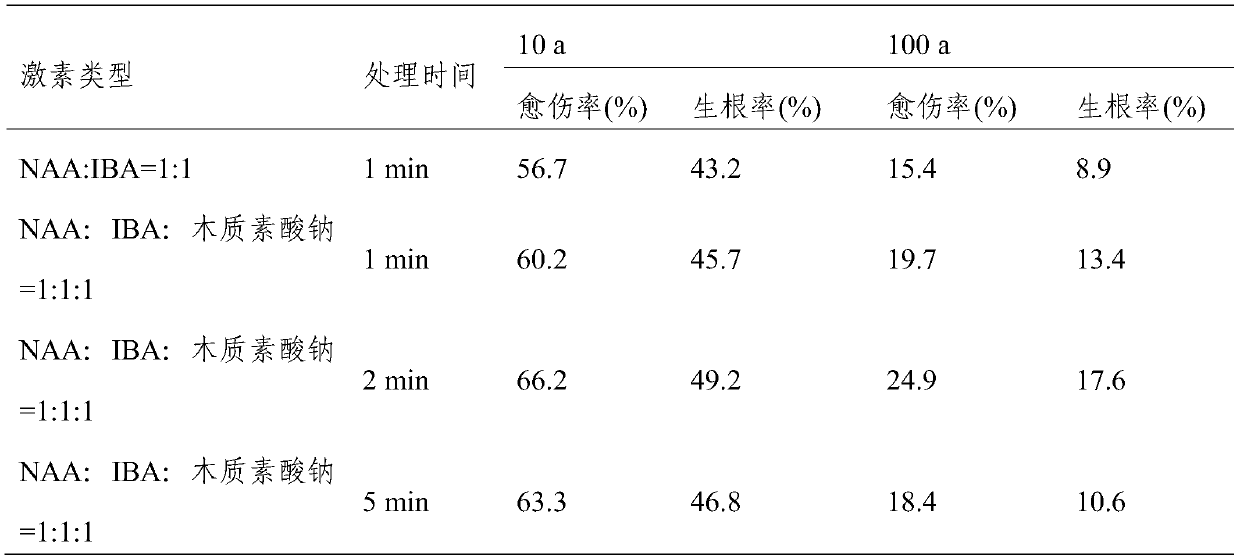Method for increasing old tree cutting survival rate
A technology of survival rate and ancient trees, applied in the biological field, can solve the problems of low survival rate of cuttings of ancient trees, achieve the effect of improving the rooting ability of cuttings, accelerating cell division, and promoting rooting
- Summary
- Abstract
- Description
- Claims
- Application Information
AI Technical Summary
Problems solved by technology
Method used
Image
Examples
Embodiment 1
[0025] Embodiment 1, the cutting condition of the ancient tree of orientalis arborvitae
[0026] 1. Screening matrix ratio
[0027] Different tree species are suitable for different substrates. Fast-growing tree species require a substrate with a large amount of water, while tree species with a long rooting time require a substrate with less water.
[0028] In this example, peat soil: perlite = 3:7 (ck); peat soil: perlite = 3:7 (add slow-release fertilizer); peat soil: perlite = 3:7 (add slow-release fertilizer later) ; Peat soil: perlite = 2:8 (ck); peat soil: perlite = 2:8 (add slow-release fertilizer); peat soil: perlite = 2:8 (add slow-release fertilizer later).
[0029] Taking the 5-year-old Arborvitae as a contrast, the 100-year-old Arborvitae of the Chinese Academy of Forestry was used for the following experiments: After disinfecting the cuttings of ancient Arborvitae trees of different ages, they were used in aqueous solutions containing different hormones. The aque...
Embodiment 2
[0033] Embodiment 2, the influence of plant growth regulator on cutting rooting rate
[0034] When the cuttings of ancient trees take root, they need certain nutrients, mainly carbohydrates and nitrogen compounds. Treatment of cuttings with sucrose aqueous solution has a better rooting effect. In addition, sodium ligninate (ASL), as a plant growth regulator, has the functions of promoting plant wound healing, rooting of cuttings, increasing seed germination rate and accelerating seedling growth, and can improve the stress resistance of forest tree seedlings. Pre-soaking the cuttings with a certain concentration of ASL can significantly promote rooting within a certain concentration range. The mixed use of ASL and NAA:IBA=1:1 can not only promote wound healing but also promote adventitious root formation. Therefore, an experiment was designed to explore the optimal ASL concentration suitable for cutting propagation of Arborvitae arborvitae, and the rooting situation after tre...
Embodiment 3
[0038] Embodiment 3, ancient tree cuttings are each treated with plant growth regulators
[0039] Carbohydrates are plant energy stores, carbon sources for secondary substances such as flavonoids, and participate in stress responses. The soluble sugar and starch contents of cuttings of Arborvitae arborvitae of different tree ages were not significantly different, but the results were consistent with the results that the initial carbohydrate content of cuttings could meet the requirement of adventitious root formation. In this example, the soluble sugar and starch content of the cuttings of Arborvitae of all ages increased to varying degrees during the callus formation stage, so adding exogenous nutrients during the cutting process of ancient Arborvitae trees may help to improve rooting. Rate. The rooting time of arborvitae is long, and there is a lot of rain in summer, and the substrate is easy to store water, causing the cuttings to rot prematurely. Therefore, timely supple...
PUM
 Login to View More
Login to View More Abstract
Description
Claims
Application Information
 Login to View More
Login to View More - R&D
- Intellectual Property
- Life Sciences
- Materials
- Tech Scout
- Unparalleled Data Quality
- Higher Quality Content
- 60% Fewer Hallucinations
Browse by: Latest US Patents, China's latest patents, Technical Efficacy Thesaurus, Application Domain, Technology Topic, Popular Technical Reports.
© 2025 PatSnap. All rights reserved.Legal|Privacy policy|Modern Slavery Act Transparency Statement|Sitemap|About US| Contact US: help@patsnap.com



